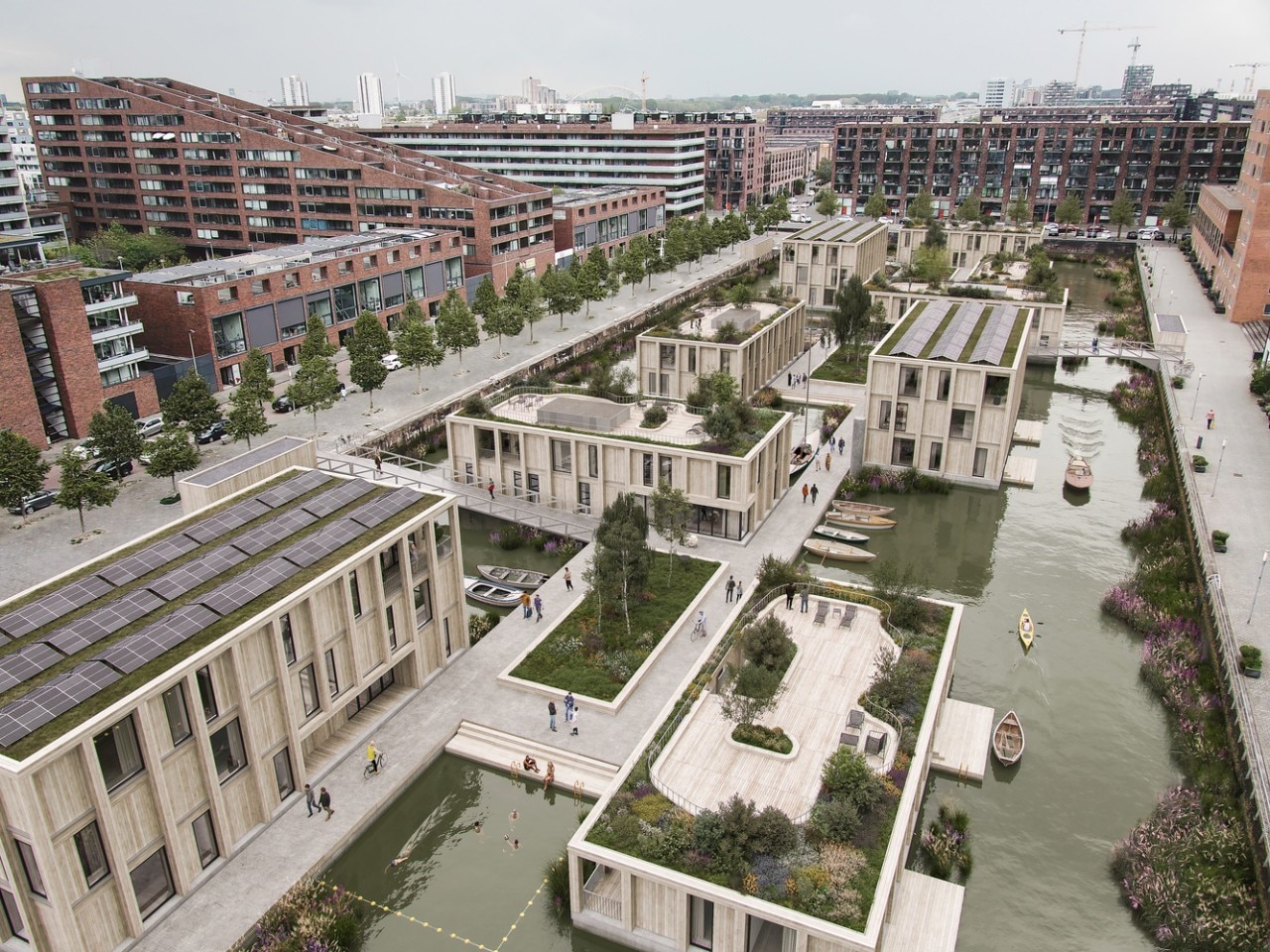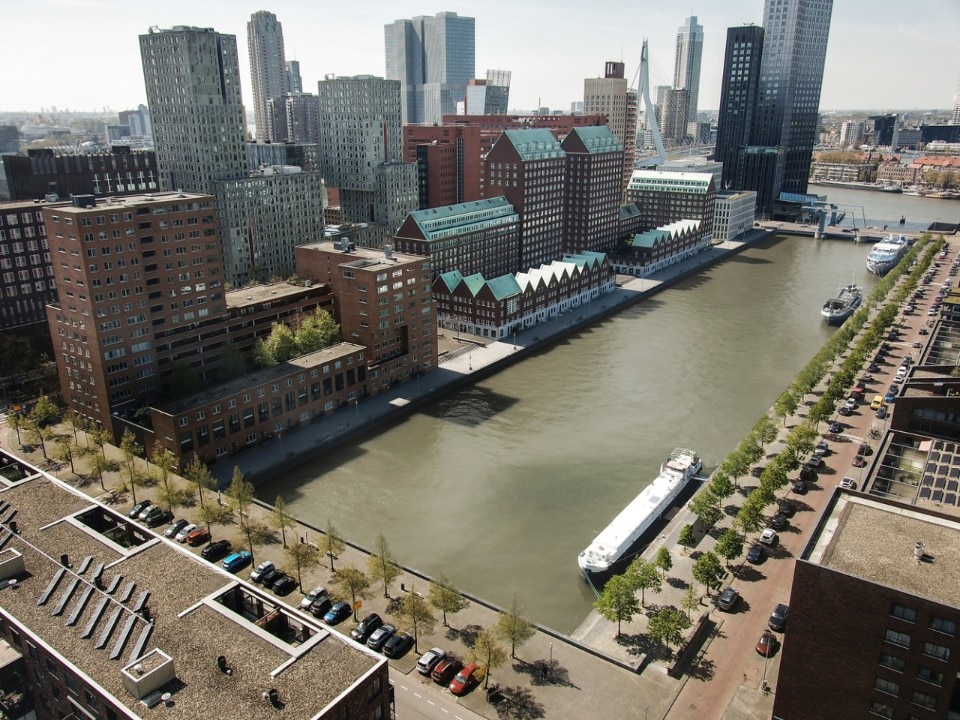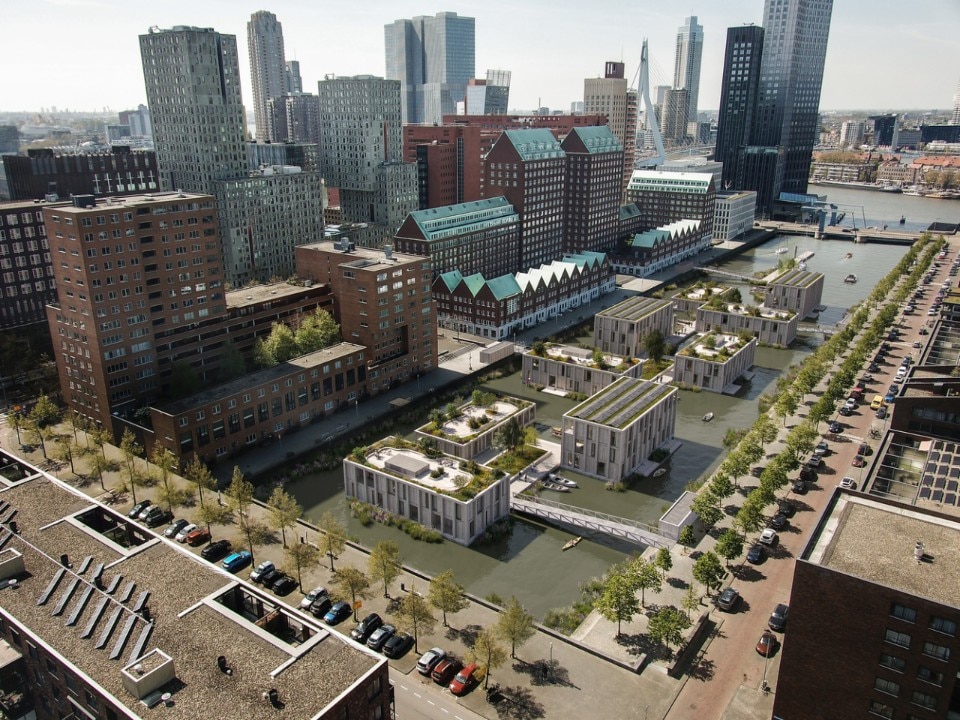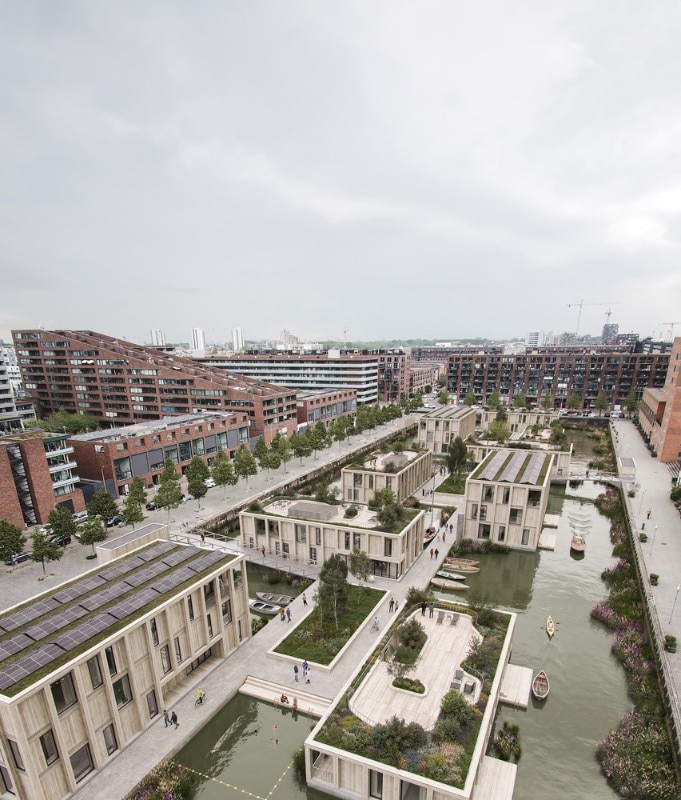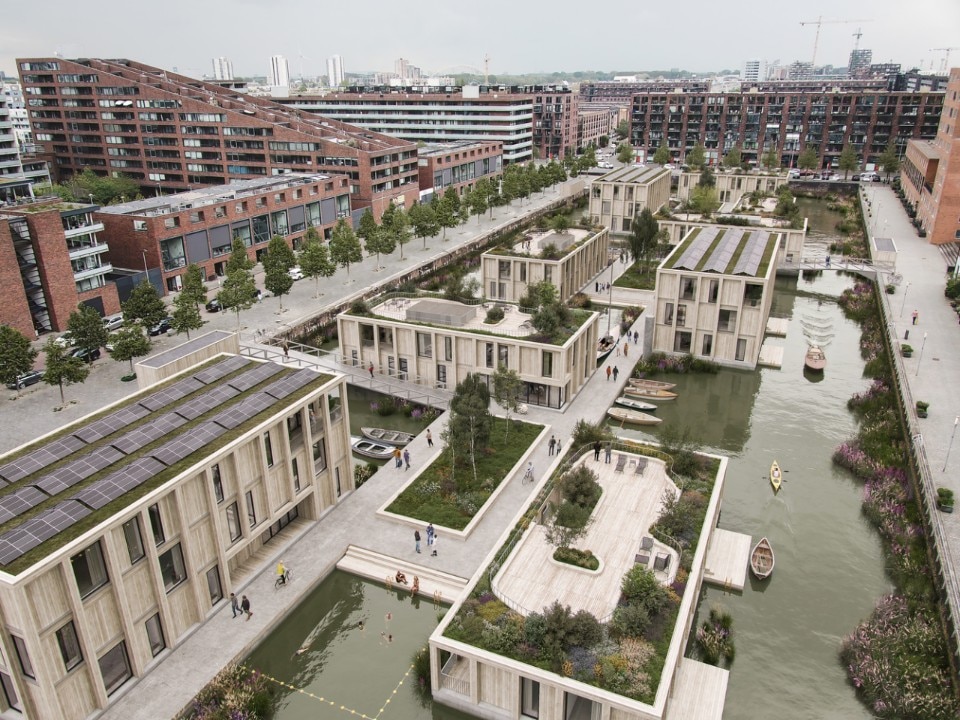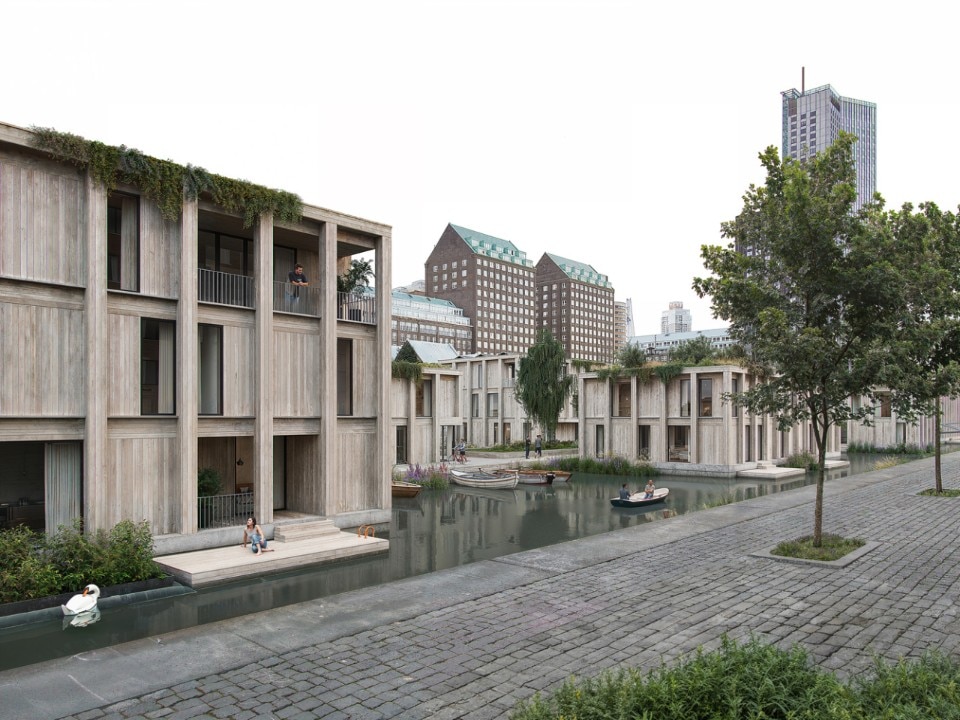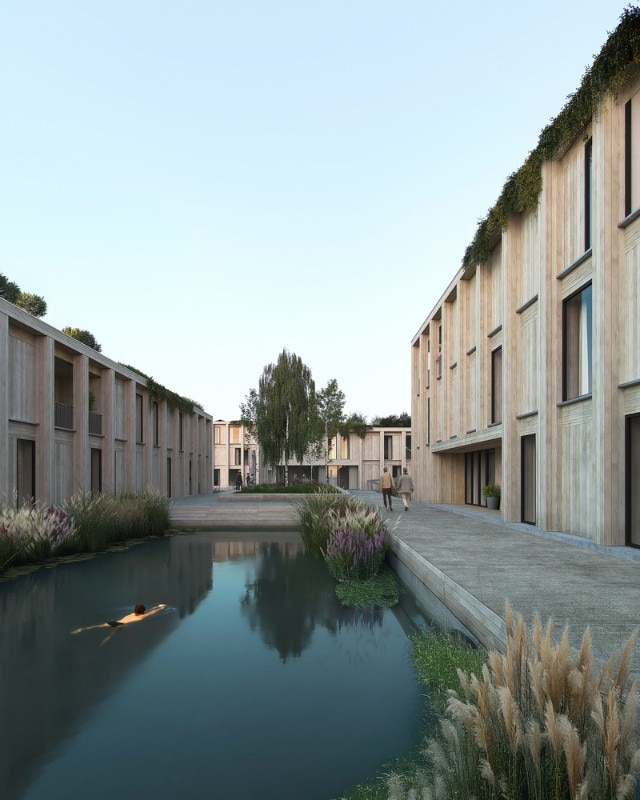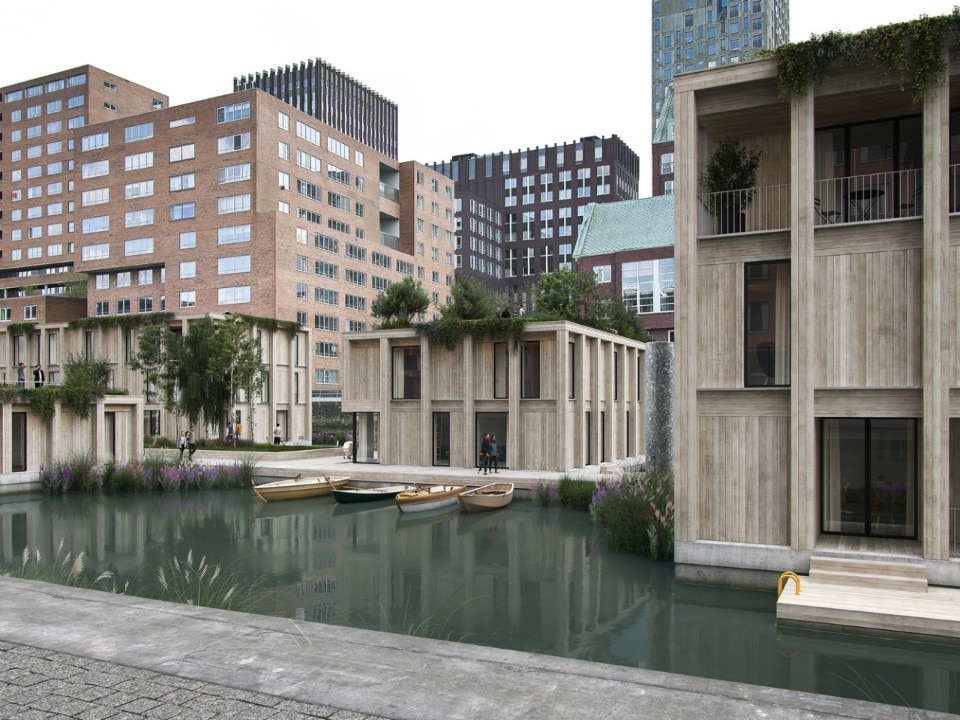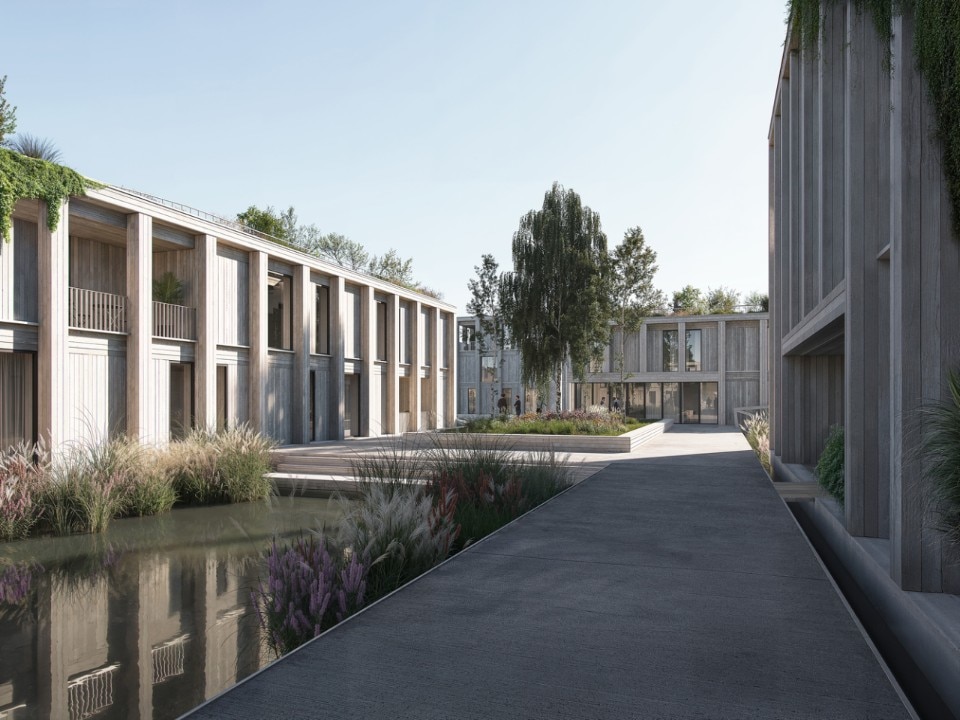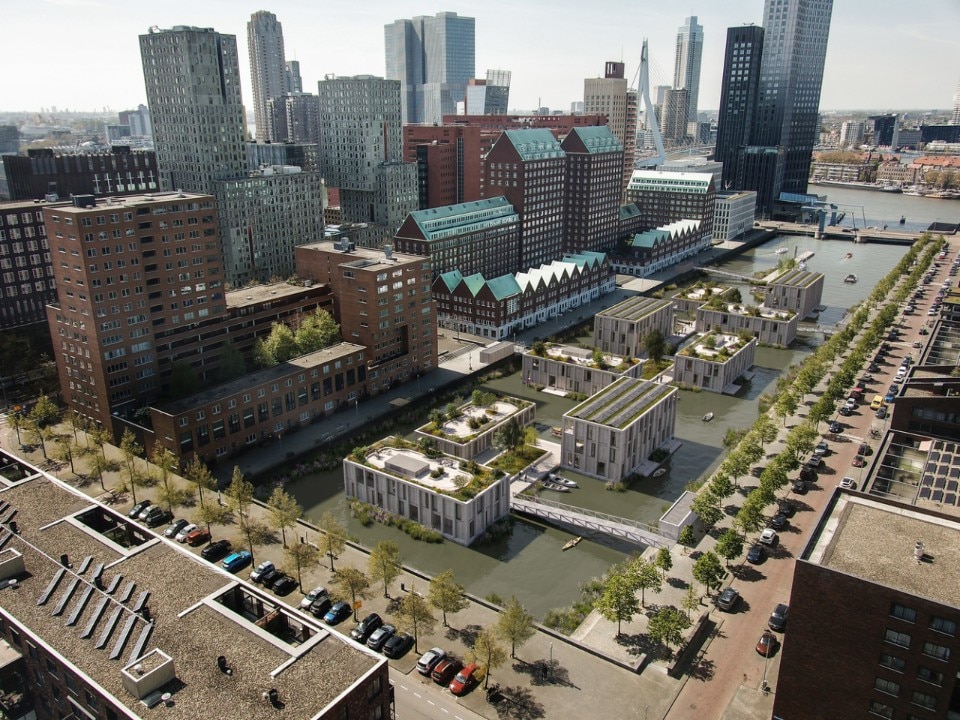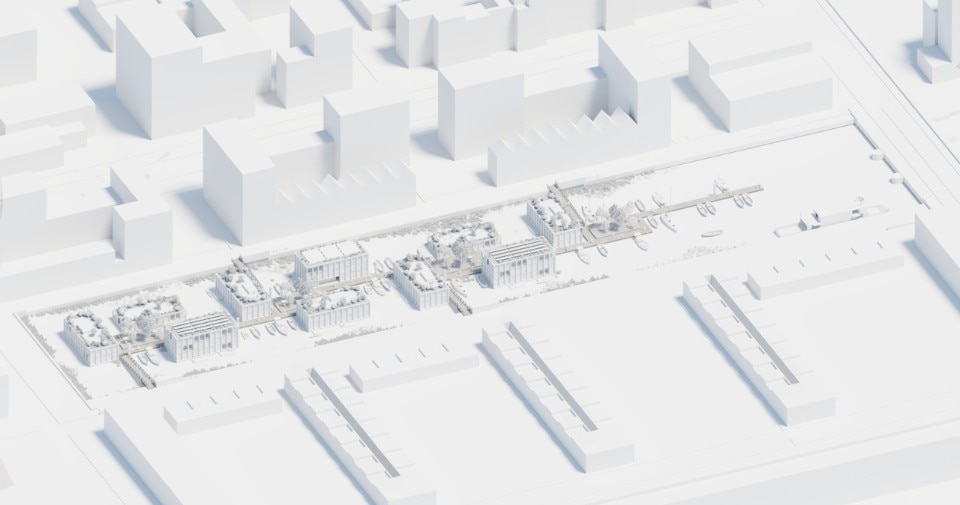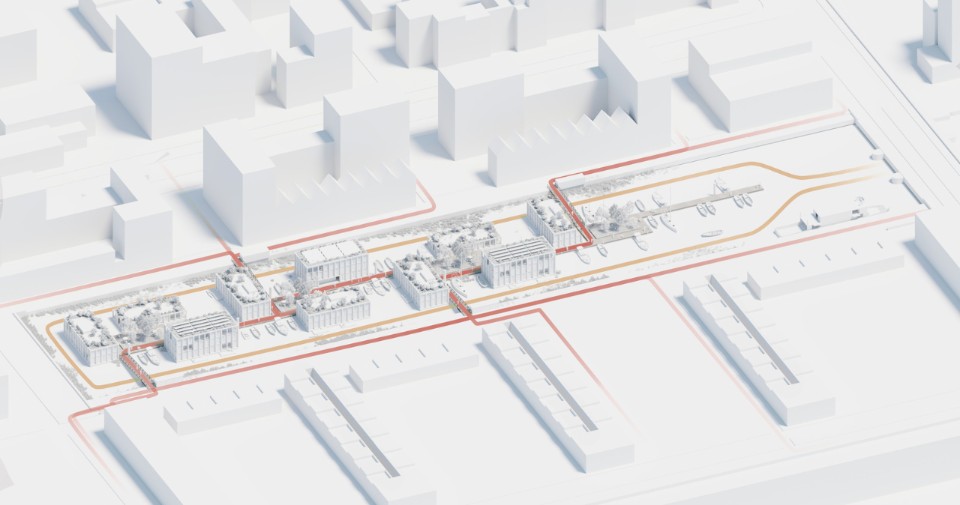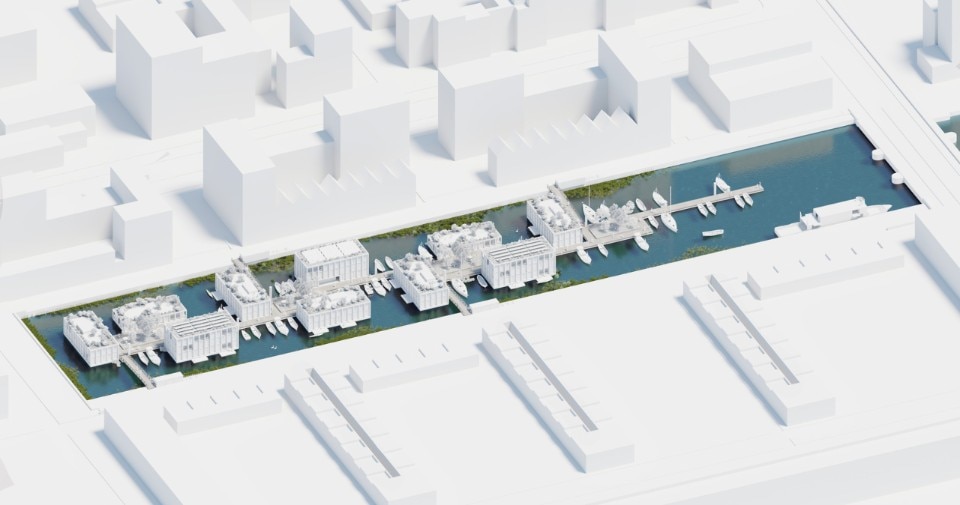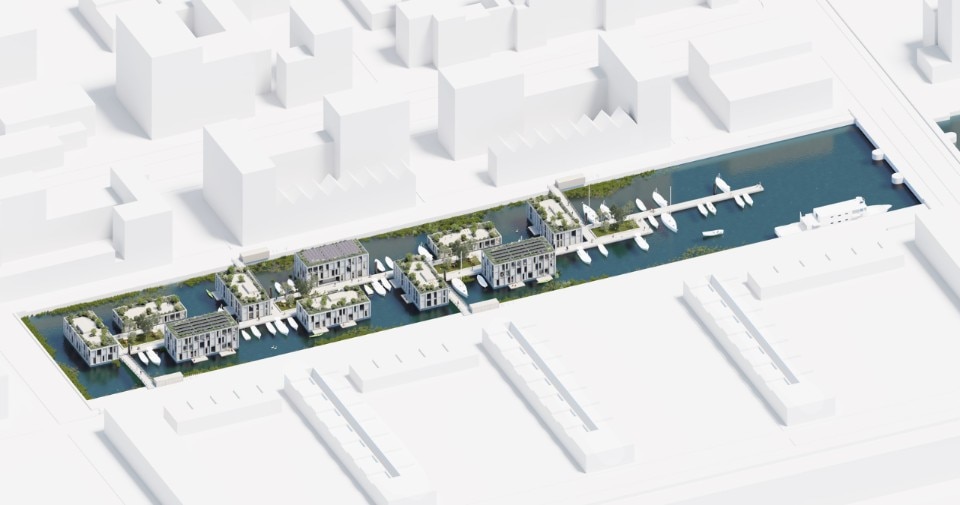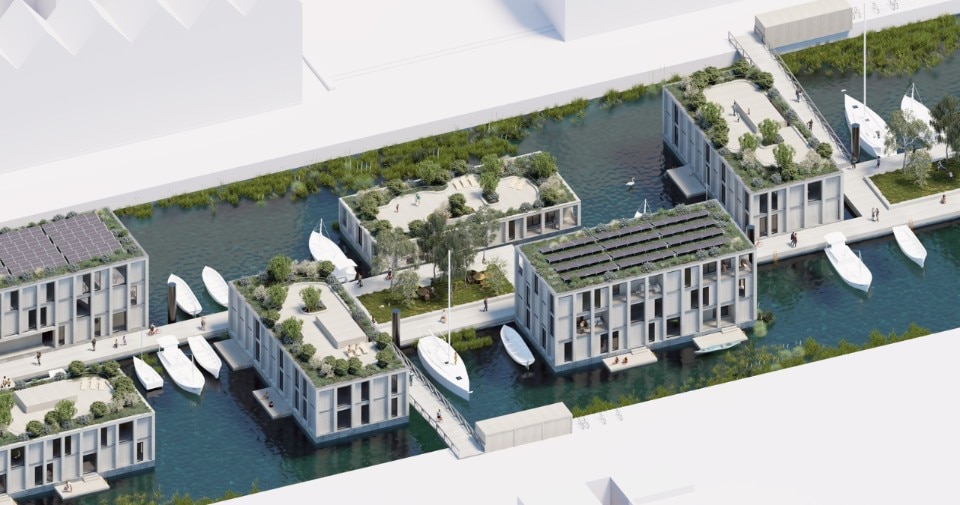The Danish studio MAST, in cooperation with the construction company BIK Bouw, has developed a project in the centre of Rotterdam for a new floating district consisting of more than 100 residential units, public spaces, green areas and commercial functions. Located in the decommissioned Spoorweghaven dock, the project, currently in the proposal phase, has received initial support from the municipality of Rotterdam and – if realised – would become the largest floating residential development in Europe.
The project fits critically into the housing crisis in the Netherlands, where the government has set a target of building around one million new homes by 2030. In this scenario, the redevelopment of unused water areas offers an alternative to densification on land. For MAST, floating communities represent a new urban typology: flexible, scalable and able to adapt to climate change and contemporary settlement needs.
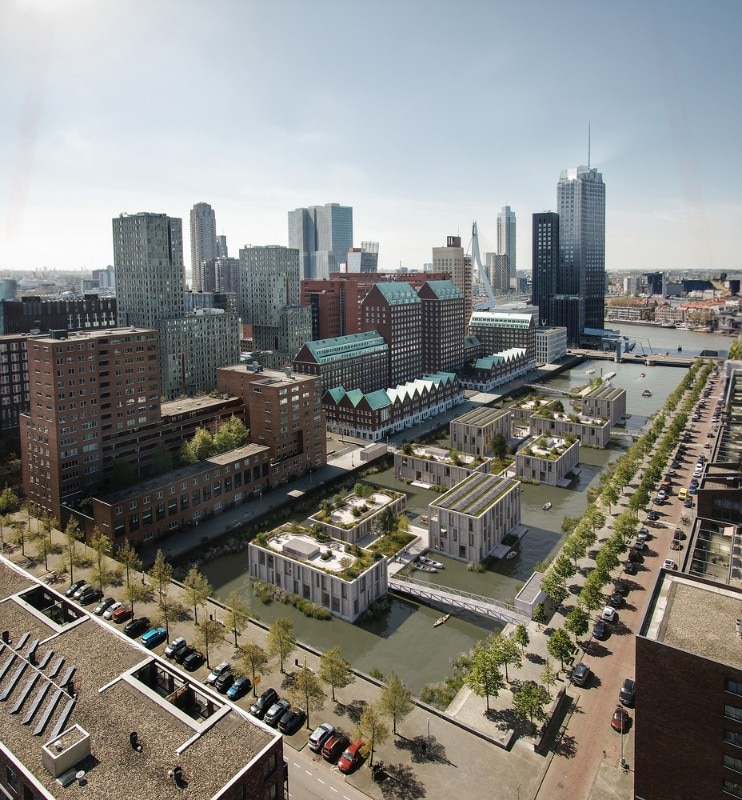
The proposed masterplan envisages a modular system of buildings on floating platforms, arranged along the basin and connected by pedestrian walkways. The entire district is conceived as an extension of the city on the water, accessible from both sides of the harbour by means of bicycle and pedestrian bridges. Connections to the existing bicycle network and integration with new water transport routes enable soft mobility, consistent with Rotterdam's vision as a resilient and environmentally oriented city.
In addition to the residences – built in prefabricated modular glulam structures – the project includes communal spaces, vegetable gardens and floating gardens, public docks and communal roof terraces. A navigable linear element, defined by the designers as a “blue ribbon”, runs through the entire intervention, offering direct boat access to the flats and public spaces, and reinforcing the aquatic identity of the neighbourhood.

Particular attention is paid to the ecological aspect. More than 900 square metres of vegetated floating islands are planned around the area, designed in collaboration with the Scottish ecological engineers Biomatrix. These devices, similar to small planted rafts, contribute to water purification, increase biodiversity and provide habitats for aquatic and poultry fauna.


